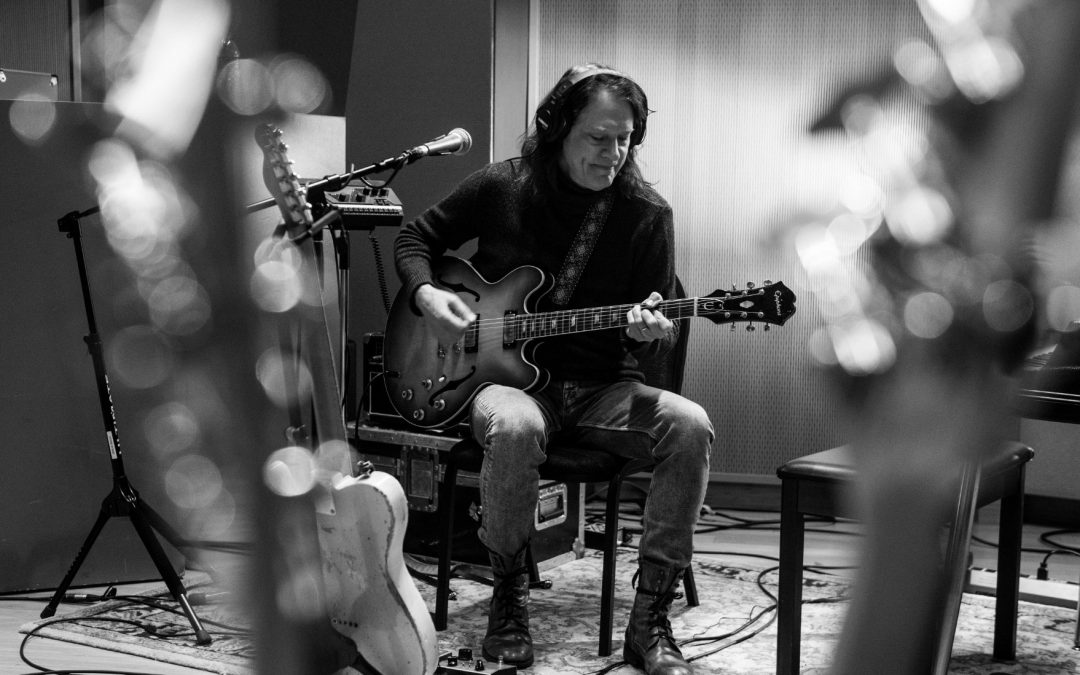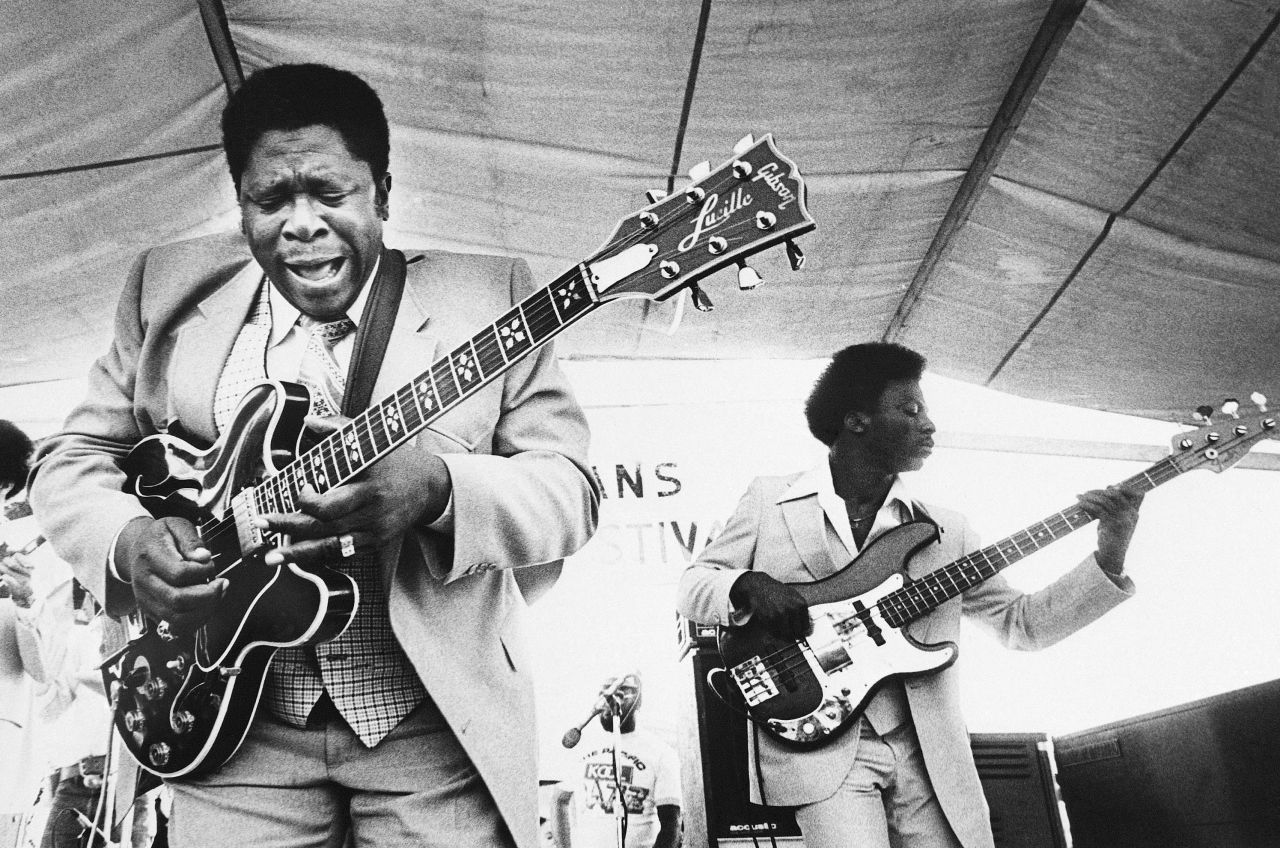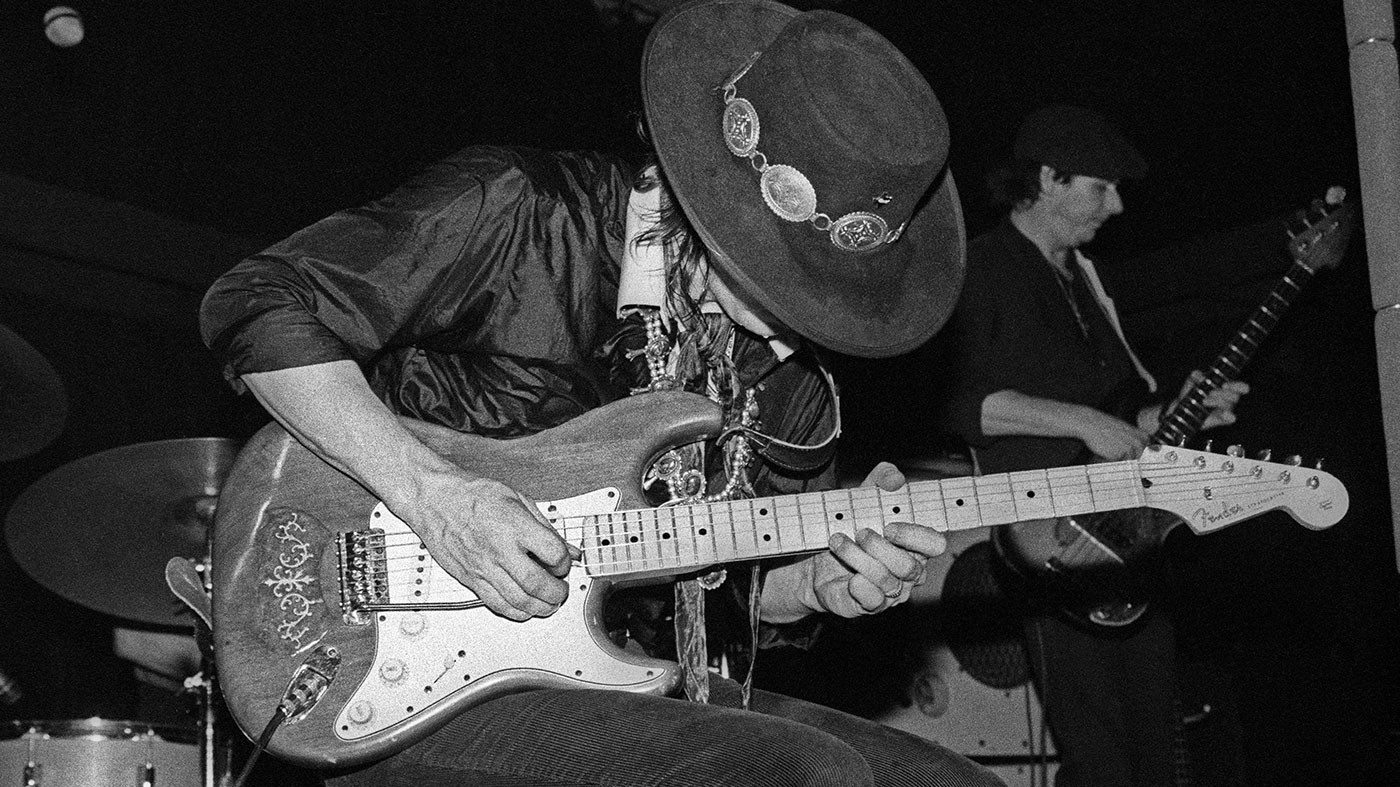If you’ve been following this series (go to: Part 1 | Part 2), and practicing the material, you should now have more than enough patterns and concepts under your fingers to be able to get some tasty blues soloing happening over the I and IV chords. In Part 3 we’ll look at how to finish things off on the V chord, what to do with the b5, and bring it home with turnarounds.
3rds and 7ths Revisited
When you come to the V chord in a 12-bar blues, you’ll want to mark the change by again emphasizing the 3rd and 7th of the chord; in a blues in A, your V chord is E7. If you’re basing yourself in the scales we looked at in Part 1, you’ll see that the b7 of the E7 chord (D) appears in all the scales except the Major Pentatonic. On the other hand, the 3rd of E7 (G#) doesn’t appear in any of them, which gives it a much greater impact, at this point in your improvisation, than any other note.
Here’s where to find them:

Sliding or bending up or down to the G# has a powerful effect at this point in the improvisation, and really makes the chord change stand out; you might even want to delay it to create added tension.
How to Work in the b5
The so-called blue note (the b5) requires special attention as if it’s not treated with care or overused, your solos will lack feel. Work in the b5 by focusing on a segment of the blues scale, rather than the whole thing, as follows:

Take the segment outlined in red and start incorporating the b5 but without landing on it. Use a combination of bends, hammer-ons and pull-offs to ‘suggest’ the note as part of your licks and runs without emphasizing it too much or landing right on it; a subtle but tasteful use of the b5 is the key here. Once you’re comfortable with the b5, replicate the exercise using the other patterns from Part 1.
Turning Things Around
The turnaround is an essential part of blues improvisation, and although there are infinite ways to accomplish this, in essence you simply descend from the b7th to the 5th of the I chord in semitones then play the V chord (E7) to finish things off. If your I chord is A7, we descend using the following notes:
G – F# – F – E – (E7)
This is a great starting point for coming up with your own turnarounds because the great thing about a turnaround is that you already know how it’s supposed to sound, you just need to find it on the fretboard. I could give you a bunch of them to learn, but it will be more beneficial to your playing to come up with your own, or listen to how your favorite blues musicians do it and shamelessly steal those ideas.
Once you’ve got a feel for the theory we’ve looked at in this series of posts, I’d recommend some serious listening and study of the old blues masters. You’ll be able to identify the concepts we’ve covered, as well as an appreciation for that raw, unpolished early blues sound.




Small typo in the section on Turning Things Around.
.. the(n) play the V chord (E7) to finish things off.
Thanks!